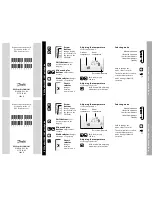
© 2018 Baker Hughes, a GE company, LLC. All rights reserved.
40 |
=
BHGE
Wiring the SVI II ESD
There are two components to wiring the SVI II ESD; making an electrical connection for power
and making a local control loop connection for HART
®
communication.
Electrical Connection Guidelines
When making the SVI II ESD electrical connections, follow these guidelines:
1. The SVI II ESD device is available in two control signal configurations: 20 mA or 24
VDC.
2. Provide sufficient electrical isolation between adjacent signal lines and between
signal lines and ground for all wiring.
3. Use stranded 14 to 22 AWG (or equivalent gauge and flexibility).
4. Use conduit sealant to prevent condensation from entering the enclosure and, in
Class 1 Div. 2 conditions to prevent hazardous gases and vapors from migrating
through the conduit to the control room or an open ignition source.
5. Wire according to the National Electrical Code (ANSI-NFPA 70) or other applicable
local codes.
6. The terminal clamps are designed for one wire only; DO NOT attempt to terminate
multiple wires into one terminal.
7. Strip the wires to the recommended length (See product specifications).
8. Ensure all wire stands are fully inserted into the terminal block and no shorts
between adjacent wires on the terminal block are possible.
9. Use care when running signal wiring near to or crossing conduit or wiring that
supplies power to motors, solenoids, lighting, horns, bells, etc. Provide sufficient
electrical isolation and shielding against electro-magnetic interference from items
in the vicinity of the cable run.
10. Run AC power wiring in a separate conduit from DC power. All power wiring to and
from the SVI II ESD must be in grounded conduit. Protect outdoor cable runs
against lightning strike.
11. Connect the SVI II ESD to a high quality instrument grade ground sized as required
by local electrical codes. A grounding stud is provided inside the enclosure.
WARNING
Comply with current national and local regulations for electrical
installation work.
Comply with national and local explosive atmosphere
regulations.
Before carrying out any work on the device, power off the
instrument or make sure that the locale conditions for potentially
explosive atmosphere permit the safe opening of the cover.
CAUTION
Refer to “Optional Switch Load Limits” on page 93“ for guidelines
on safely wiring switch load limits.
















































